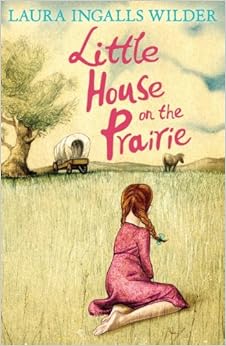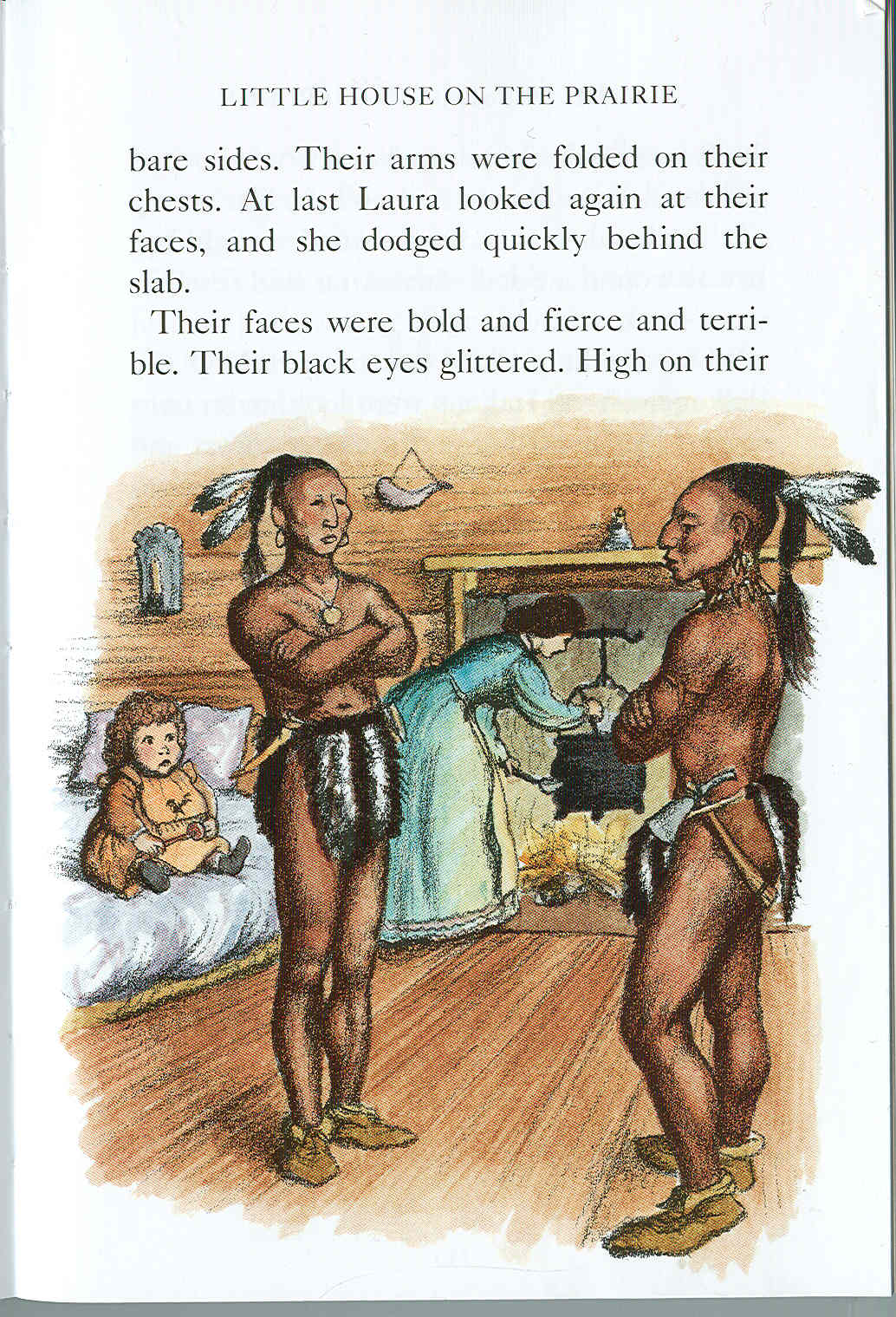 Since it's release in 1935 Little House on the Prairie (LHOP) has been an extremely popular children's book worldwide. It was marketed by the publishers as a children's book in keeping with the other books in the series. LHOP is to this day still read widely by school children and studied as a text within schools, this being said LHOP is also widely known to be a controversial text due to it representation of Native Americans especially through the eyes of the characters.
Since it's release in 1935 Little House on the Prairie (LHOP) has been an extremely popular children's book worldwide. It was marketed by the publishers as a children's book in keeping with the other books in the series. LHOP is to this day still read widely by school children and studied as a text within schools, this being said LHOP is also widely known to be a controversial text due to it representation of Native Americans especially through the eyes of the characters. There are multiple views of American Indians throughout the text but it is Ma's view that is most controversial. Ma is a strong-willed character in most aspects and her view on Native Americans follows the same suit, to put it simply for now she does not like them in the slightest, this theme is introduced early on in the text as it is prompted by Laura asking to see a 'papoose'.
This detail of Ma's character becomes most prevalent in chapter 4 (Prairie Day) on page 35. It is at this point within the story that you begin to understand the representation of American Indians in relation to the entire text. Page 35 reads;
"'Where is a papoose , Ma?' Laura asked...
'Mercy on us!' Ma said. 'Whatever makes you want to see Indians? We will see enough of them. More than we would want to, I wouldn't wonder.'"
It is this point at which we first see Ma's true feeling towards the Native peoples. 'Indians' are mentioned throughout the book before this chapter but is only really in regards to land and the papoose.
Towards the bottom of page 35 through and onto page 36 the narrator describes how Ma was explaining to Laura that she wasn't sure as to whether they had crossed into Native American territory yet, but the narrative goes on to say that Ma wasn't concerned as to whether or not they had, simply because she was confident they would be relocated soon.
What is intriguing about the discussion between Ma and Laura is that Laura asks if the Native Americans would hurt them and Ma responds sharply with "'No!'... 'Don't get such an idea into your head.'" This answer can be read many different ways but what stands out to oneself most is the fact that she doesn't see the Native American as trouble even though they would be going on to their land. This stands as the firm ideology of white superiority and strength over the Native population, very typical of European settlers (particular of Anglo descent) and the frontier mentality giving the white man right to the land especially, uncultivated land, and strengthens the belief that the white man can do as they please without threat from the Native Americans. All this is typified by Ma's response and her general character most predominantly in that short response she gave Laura.
This representation of Native Americans did impact Laura as she began this book with a seemingly more "naïve" view of the Native population. As the story progresses her Pa's and Ma's separate yet similar representations of American Indians influence how Laura perceives the Native peoples. Laura appears to follow more of her mothers views as opposed to her fathers. Pa represents Indians in a more complex way, it is more grey with Pa instead of it being black and white like Ma. Pa doesn't speak of the Native Americans in always the greatest way or with much respect yet often his actions are separate from his words.
 Another brief point to pick up on is in Chapter 11, Indians in the House, the Native Americans are stereotyped. Now, in all honesty this could be a true representation of the two men at the time but the problem with that is this; Laura writes 'Their heads seemed to go up... and ended in feathers' from personal understanding a feather head-dress wouldn't have been worn to simply to walk around and enter peoples houses in, it is much more a ceremonial part of dress meaning it is likely that these two American Indians were dressed according to stereotype rather than what they were truly wearing.
Another brief point to pick up on is in Chapter 11, Indians in the House, the Native Americans are stereotyped. Now, in all honesty this could be a true representation of the two men at the time but the problem with that is this; Laura writes 'Their heads seemed to go up... and ended in feathers' from personal understanding a feather head-dress wouldn't have been worn to simply to walk around and enter peoples houses in, it is much more a ceremonial part of dress meaning it is likely that these two American Indians were dressed according to stereotype rather than what they were truly wearing.In all honesty the representation of Native Americans is agreeably controversial but you have to argue the point that at the time of publishing, almost a century ago, and the time in which it is based on, over a century ago, it was not a controversial subject. The representation of the Native population is not a good representation by any stretch of the imagination, but that should not affect the use of the book in teaching as it could prove beneficial in raising awareness and understanding of contemporary views versus past views.
Sources;
"GOING TO INDIAN TERRITORY" ATTITUDES TOWARD NATIVE AMERICANS IN LITTLE HOUSE ON THE PRAIRIE: http://digitalcommons.unl.edu/cgi/viewcontent.cgi?article=1021&context=greatplainsquarterly
Book Cover Image: http://ecx.images-amazon.com/images/I/51qSnI30saL._SY344_BO1,204,203,200_.jpg
Indians in the House Image: http://www.bluecorncomics.com/pics/lilhous3.jpg
No comments:
Post a Comment